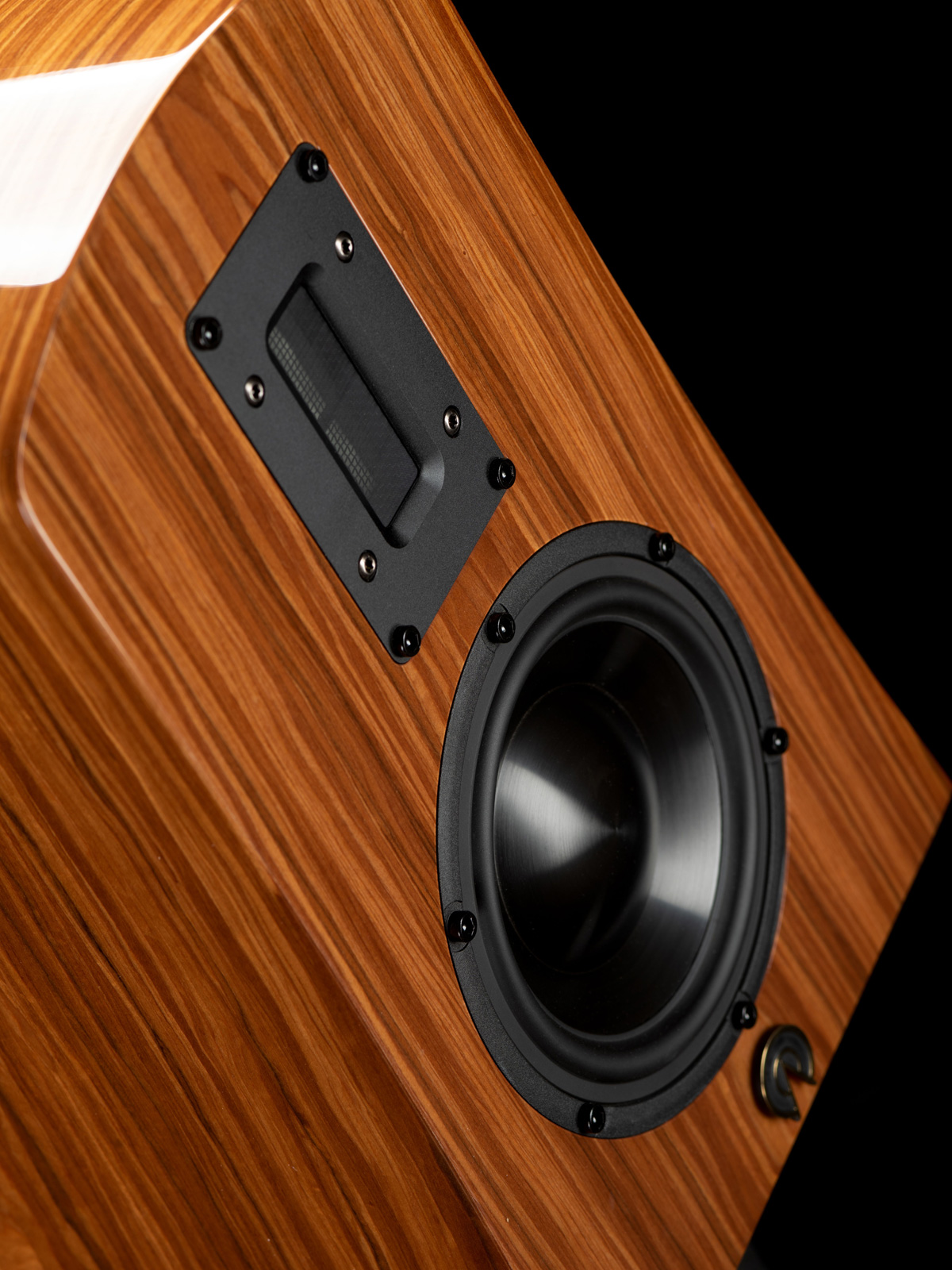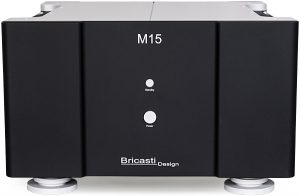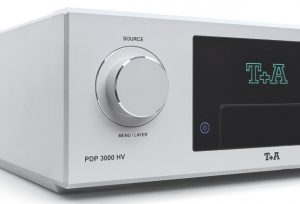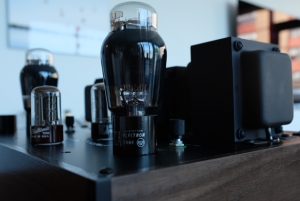Six months ago, I was an infrequent headphone user. At best I listened to an old set of ear buds with balance armatures while riding the elliptical during one my very infrequent visits to the gym. Did I possess a decent pair of closed-back circumaural headphones? Check. Had I attended headphone shows and been exposed to state of the art? Check. Did I consider myself a headphone guy? Hard no. Then, all of a sudden, I found myself working from home with too much free time and an inability to get to sleep.
As the quarantine weeks slowly accumulated, a new behavior began to evolve. Even though the main system is essential to my wellness, I discovered that late night listening to music with headphones focused my mind and helped with achieving slumber. Unfortunately, the excellent headphone output of the Mytek Brooklyn DAC+ and my comfortable listening chair reside on opposite sides of the room. Enter the iFi ZEN CAN.
Ifi is a well-regarded British corporation that produces a bewildering number of reasonably priced specialty audio products manufactured in China. Four years ago, I favorably reviewed iFi's iDAC2 and iUSB3. (Might I possibly wear out the "I" on my keyboard by the end of this review?)
Unboxing the ZEN CAN is a delight. The attractively designed unit felt substantial in the palm of my hand indicating quality parts and assembly. The central volume knob turns luxuriously smooth. The amp comes packaged with a purple half meter RCA interconnect, a quarter inch adaptor, and iFi's in house designed wall wart power supply. The polished metal adaptor seems ridiculously over engineered and gripped the one eighth inch connectors of my headphones with a force I've never encountered before. I wondered to myself that if Ifi put this much quality into an adaptor, I must be in for some quality sound. I was not disappointed.
The unit turns on with the small button on the farthest left on the front panel. A tiny LED flickers white for about eight seconds then stays on and the amp is ready. You might be slightly surprised to discover how warm the Zen Can feels when you reach to turn if off after about an hour. The second push button selects one of three inputs. Input 1 is for RCA. Input 2 accepts a stereo mini plug. 3 is for a pair of 4.4mm balanced inputs. Unfortunately, I do not own a pair of balanced headphone and thus cannot comment on this feature's benefits. You can recognize balanced connectors because they have four black stripes. The following is a direct quote from Ifi's website:
"An unbalanced headphone cable has a left+ and right+ wire, for each respective side. The other, the third wire, is shared by both L and R channels. As this is shared, this gives to undesired coupling noise which is commonly referred to as crosstalk. A balanced cable the same L+ and R+. But it has a separate L- and R-. With totally separate wiring crosstalk is negligible."
A third larger button selects gain in increments of 0, 6, 12, and 18dB. I listened with the iPad at full output and level 2 (6dB) gain. This set up allowed me to comfortably range the volume between 12 and 2 o'clock. I marveled at what type of ear speaker would require 18dB of gain and near full volume to make music.
The button on the farthest left engages IFi's propriety effects. The first effect is XBass. I can confidently state the XBass is the subtlest bass boost I have ever heard. In many ways, XBass reminds me off how I employed a subwoofer with my KEF LS50 speakers. Of course, music always sounded splendid with the subwoofer off. However, when the sub was activated, music flowed transparently as before, but the room felt different, more alive. How XBass achieves a similar result is best explained with a visit to their website. The second effect, 3D+, is designed to enhance the listening experience with atmospheric information similar to a cross feed circuit. In general, I did not engage these effects for purposes of this review.
The headphones used included Audeze EL8 Titanium closed back with planar magnetic drivers ($800), Periodic Audio Be earbuds with beryllium drivers ($300), and a vintage pair of open back Grado SR60 ($?). All three presented an easy 30-32ohm load. You will note that all of the above do not employ crossovers. Exclusively, I streamed music from the Tidal app on my iPad connected to Zen Can with a half meter RCA to mini cable.
The first thing I noted about the Zen Can's sound was how eminently quiet the unit operated. Listen to Love Theme from "Spartacus" on Carlos Santana's 1980 solo album The Swing of Delight. The panning effect from Herbie Hancock's Fender Rhodes piano intro was mesmerizing. Notes decayed into pools of deep black silence. (Me smiling and nodding my head. Repeat, repeat)
Was the Zen Can designed with piano lovers in mind? Convince me it wasn't. Bach's Goldberg Variations, BWV 988 Aria as played by…take your pick! I particularly enjoyed alternating between Glenn Gould humming along from his 1981 Columbia recording and Simone Dinnertein's sublime 2007 rendition on Telarc. Follow up with Víkingur Ólafsson's own transcendental transcription of "Widerstehe doch der Sünde", BWV 54 and Khatia Buniatishvili's elegant reading of Cantata No. 208, "Was mir behagt, ist nur die munt", Movement: Aria: Schafe können sicher weiden (Sheep may safely graze). Incredibly, Zen Can rendered the full scale poetic majesty and expressive nuance of these tracks between my ears in a manner that was immersive and emotionally engaging.
I played "On The Nature of Daylight" from Max Richter's The Blue Notebooks on DG. Zen Can exceeded at recreating the string orchestra's lush layers of sound and musical movement. Dynamic intensity ebb and flowed with remarkable precision and grace. The sound of orchestra through Zen Can was startlingly similar to the clean coherent sound of modern solid state amps ranging in the thousands of dollars. If Zen Can came in a 60 watts integrated version, I'd buy it now and put it along side my main system.
Canadian Amanda Martinez has a lovely voice. Her 2006 album Sola is well recorded and features a set of intimate songs from Latin America and Cuba accompanied by excellent group of musicians. Zen Can gave shape and soul to the sound of Amanda's voice. The sultry song "Dragon" is sung in English and will make the hairs on the back of your neck stand up. (You guys should really try somebody else besides Barber and Krall.) Seriously, please, listen "So We Meet Again My Heartache" by Melody Gardot. If your heart isn't in your throat after, check your pulse.
About six weeks prior to the arrival of Zen Can, I took delivery of the similarly priced Schiit Vali 2. The unit was purchased unheard but trusting in my partiality for devices with glass in them. I quite enjoy relaxing with my warm Schiit's glow at night. Generally, Positive Feedback does not encourage shoot outs nor is one called for. The Zen Can's feature set distinguishes itself in the headphone amp market at this price. Therefore, I hereby bestow my Writer's Choice Award to iFi's Zen Can. The excellent sounding Zen Can is the right product at the right price for these challenging times in quarantine.
Toward the end of the review period, I had the opportunity to experience the debut broadcast of David Bryne's American Utopia on a $10k speaker/amp combination under review. Instead I chose $150 Zen Can and vintage SR60, wonderful!
Zen Can
Retail: $150
iFi Audio








































